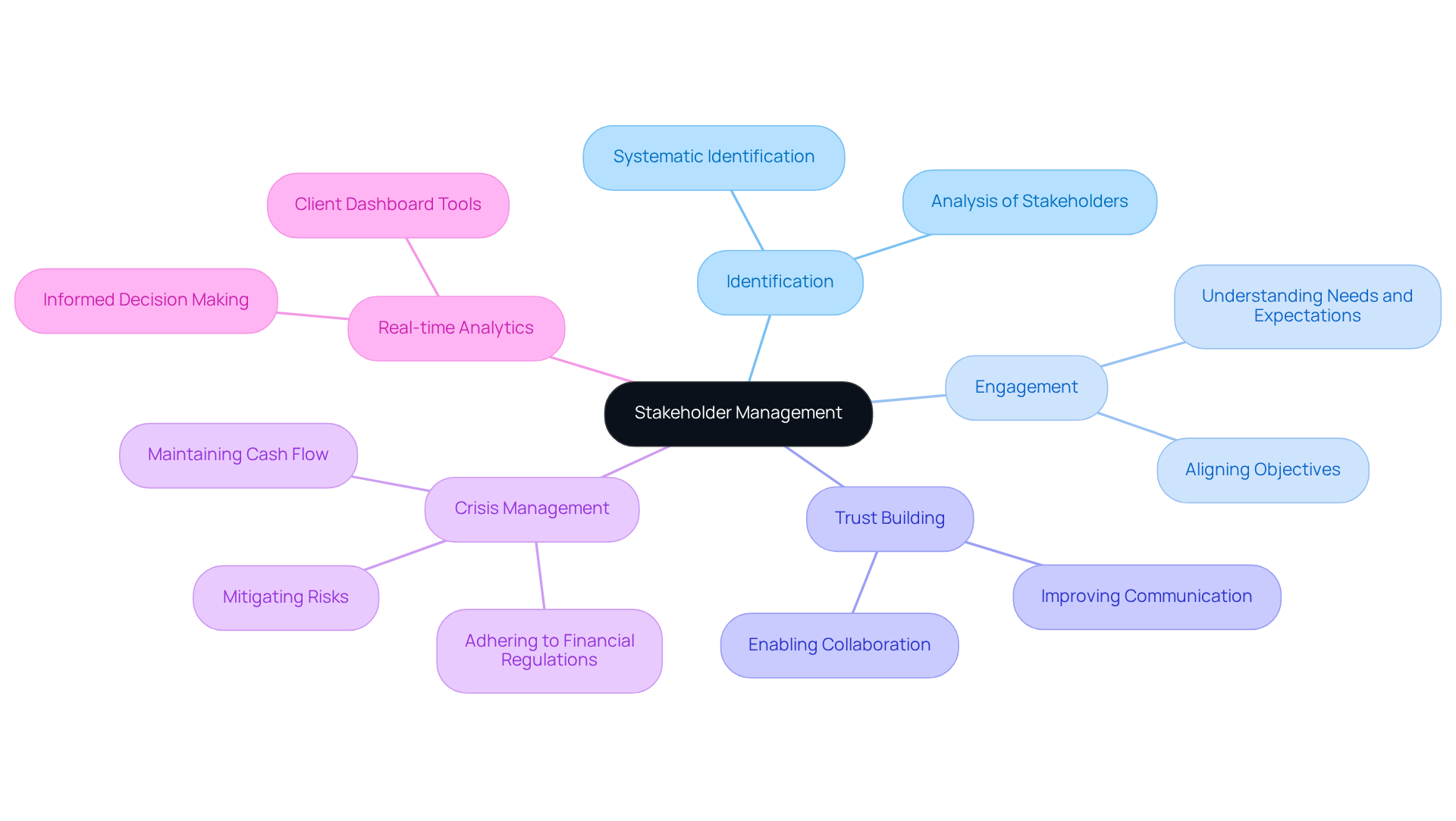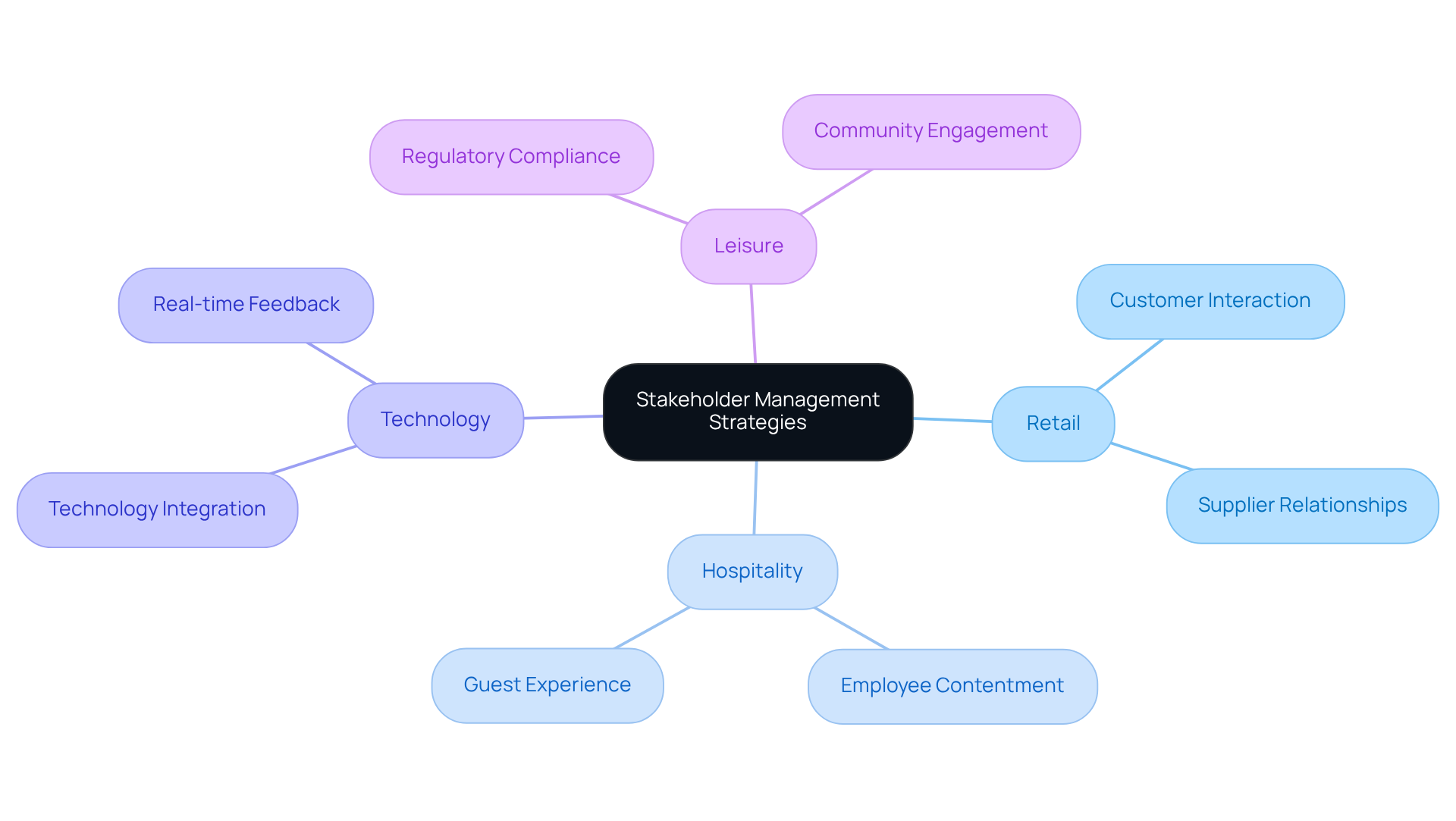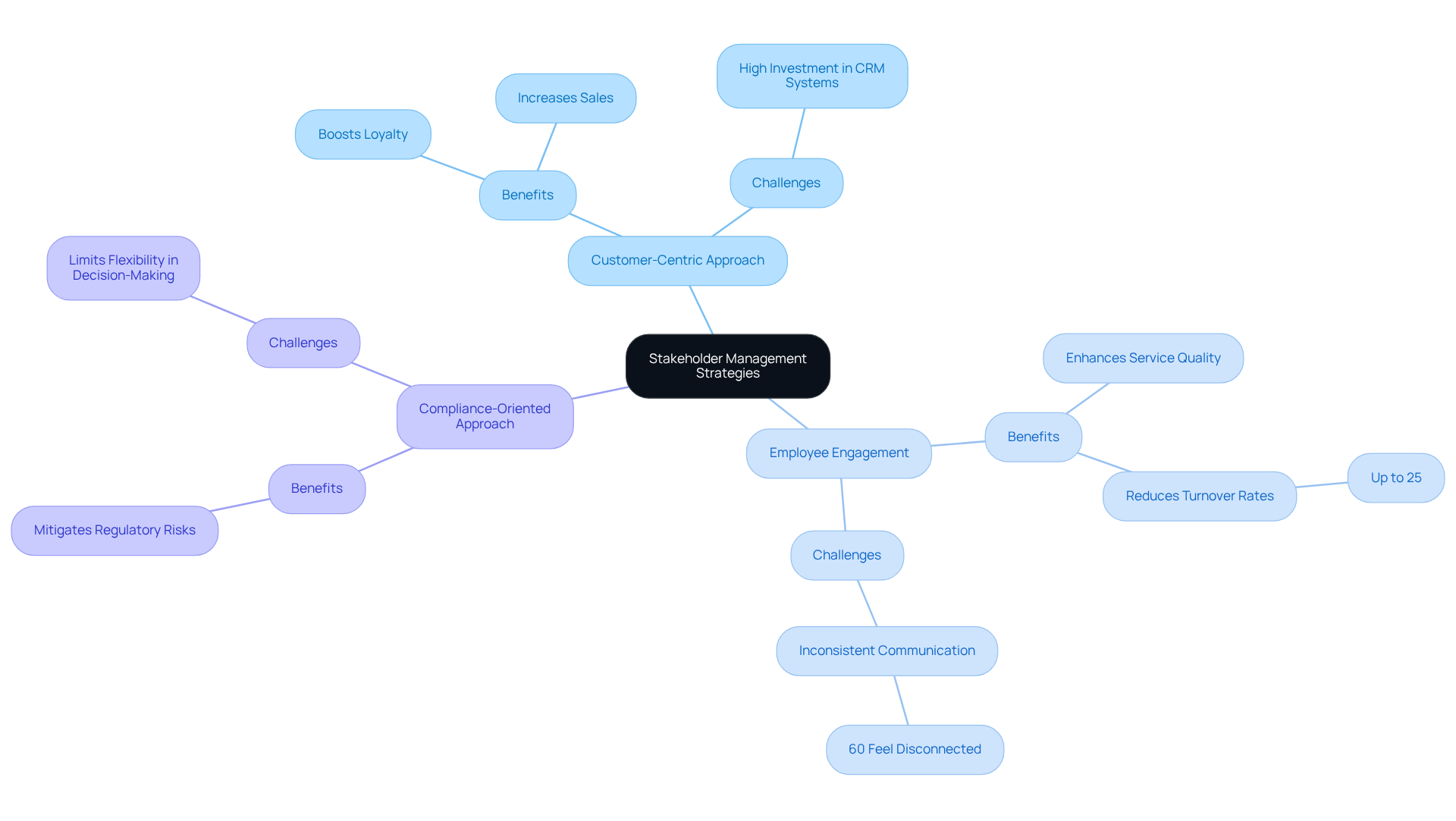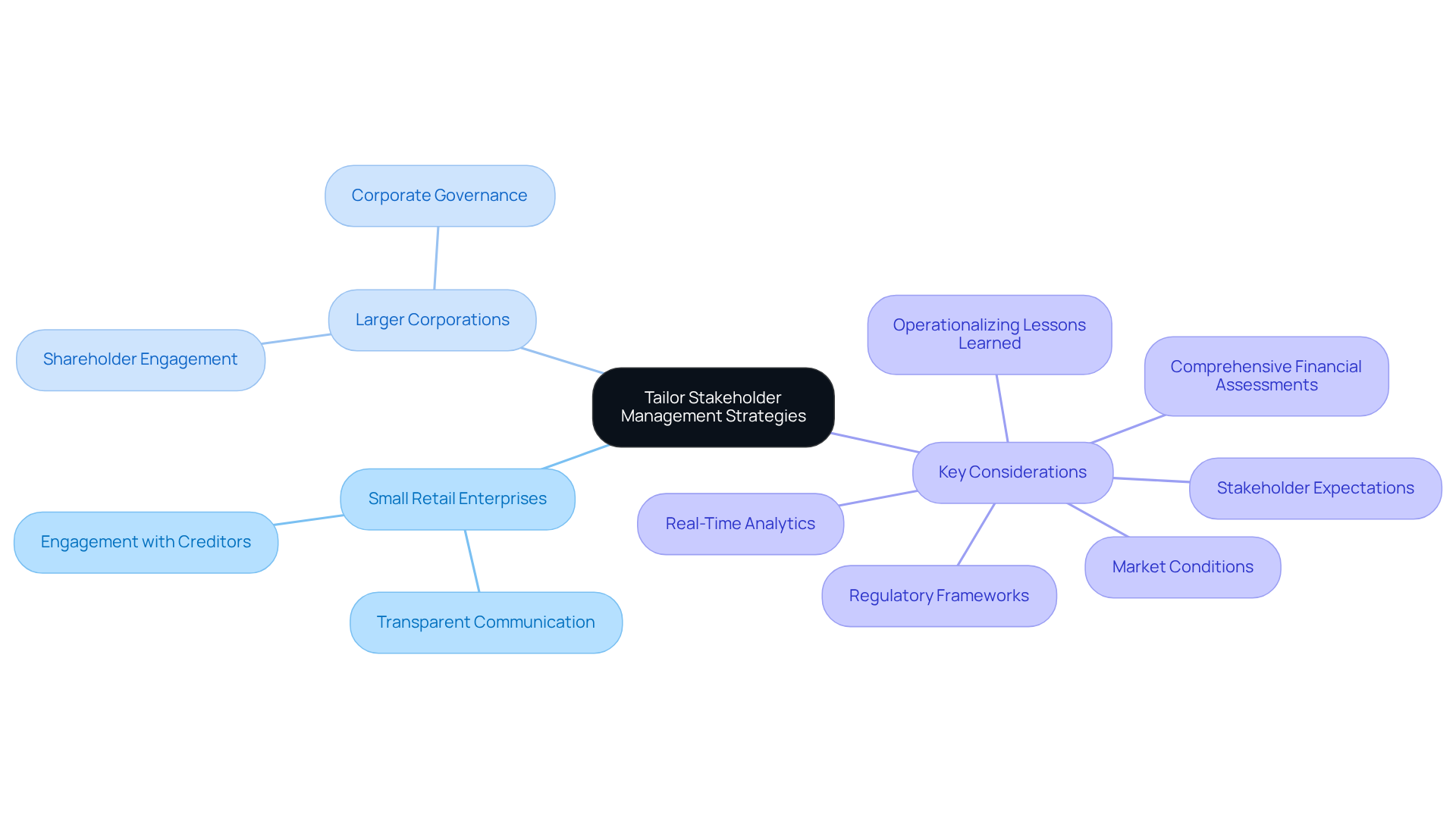Overview
This article presents four compelling examples of stakeholder management strategies tailored for CFOs, underscoring the necessity of customized engagement that aligns with specific industry and business contexts. Effective stakeholder management is not merely beneficial; it is essential for fostering trust and collaboration—two critical components for navigating challenges and driving sustainable growth.
By leveraging real-time analytics and bespoke approaches, organizations can effectively address the unique needs of their stakeholders, paving the way for enhanced outcomes. The insights shared herein are designed to empower CFOs to take decisive action in refining their stakeholder engagement strategies.
Introduction
Effective stakeholder management transcends mere buzzword status; it stands as a critical component for CFOs navigating the complexities of modern business landscapes. By understanding and engaging with diverse stakeholders—from investors to employees—CFOs can forge stronger connections that lead to enhanced trust and collaboration. However, the challenge lies in adapting strategies that resonate across various industries, each with its unique demands and expectations.
How can CFOs tailor their approaches to not only meet these needs but also drive sustainable growth in an ever-evolving environment?
Define Stakeholder Management and Its Importance
Examples of stakeholder management strategy include the systematic identification, analysis, and engagement of individuals or groups that can affect or are affected by an organization's objectives. For CFOs, efficient engagement with interested parties is crucial, particularly in times of crisis. This engagement entails comprehending the needs and expectations of stakeholders, including investors, employees, customers, and suppliers, and aligning them with the organization's objectives.
The significance of participant oversight lies in its capacity to cultivate trust, improve communication, and enable collaboration—elements that are essential for overcoming challenges and achieving sustainable growth. In crisis situations, stakeholder management strategy examples can provide a clearly outlined approach for dealing with stakeholders to mitigate risks, maintain cash flow, and ensure adherence to financial regulations.
Moreover, by utilizing real-time analytics through tools such as the client dashboard, CFOs can make informed decisions that enhance stakeholder involvement and operationalize insights gained from past experiences. This proactive approach ultimately leads to improved organizational resilience and the ability to adapt to changing circumstances.

Compare Stakeholder Management Strategies by Industry
Stakeholder management strategy examples exhibit considerable variation across industries, each requiring tailored approaches to meet specific needs. In the retail sector, the emphasis is often on customer interaction and supplier relationships, where transparency and responsiveness to consumer demands are paramount.
Conversely, the hospitality sector prioritizes employee contentment and guest experience, necessitating a more tailored approach to interactions with relevant parties. This sector's strategies frequently involve direct engagement with guests to enhance their experience, fostering greater loyalty and repeat business.
Furthermore, technology integration plays an essential role in improving participant engagement and communication, enabling real-time feedback and interaction. In the leisure industry, managing relationships with regulatory entities and community members is crucial, necessitating approaches that underscore adherence and corporate social responsibility.
Building connections with involved parties based on trust and respect can lead to long-term partnerships and future collaboration opportunities. By analyzing these industry-specific methods, CFOs can gain valuable insights into the nuances of stakeholder interaction, empowering them to refine their stakeholder management strategy examples for optimal effectiveness.

Evaluate Benefits and Challenges of Each Strategy
Each stakeholder management strategy example presents distinct benefits and challenges. A customer-centric approach in retail, for instance, can significantly boost loyalty and sales. However, it often necessitates substantial investments in customer relationship management systems.
In the hospitality industry, prioritizing employee engagement is crucial; studies indicate that engaged employees can enhance service quality and reduce turnover rates by up to 25%. Nevertheless, maintaining consistent communication across diverse teams remains a challenge, as 60% of hospitality employees report feeling disconnected from their organization's goals.
Moreover, while a compliance-oriented approach in the leisure sector can effectively mitigate regulatory risks, it may inadvertently limit flexibility in decision-making processes.
By thoroughly assessing these elements, CFOs can skillfully manage the intricacies of stakeholder relationships using stakeholder management strategy examples, choosing approaches that align with their organization's goals and promote sustainable growth.

Tailor Stakeholder Management Strategies to Business Contexts
To effectively manage interested parties, CFOs must tailor their approaches to the specific context of their business. This requires a thorough examination of the organization’s internal and external environments, encompassing market conditions, regulatory frameworks, and stakeholder expectations.
For instance, a small retail enterprise facing financial difficulties may benefit from a strategy focused on transparent communication with creditors and suppliers. In contrast, a larger corporation might prioritize shareholder engagement and corporate governance.
By customizing stakeholder management strategy examples and utilizing real-time analytics, CFOs can address the unique challenges and opportunities presented by their business context. Moreover, a commitment to operationalizing lessons learned from turnaround processes, alongside comprehensive financial assessments, can cultivate strong, enduring relationships, help preserve cash, and reduce liabilities.
Ultimately, these efforts lead to more successful outcomes.

Conclusion
Stakeholder management stands as a crucial pillar for CFOs striving to align organizational objectives with the multifaceted needs of various stakeholders. By effectively engaging with investors, employees, customers, and suppliers, CFOs can cultivate trust and foster collaboration—both essential for navigating challenges and driving sustainable growth. This strategic engagement becomes particularly vital in times of crisis, where a deep understanding of stakeholder expectations can mitigate risks and ensure compliance with financial regulations.
Throughout this article, we have examined various stakeholder management strategies across different industries, underscoring the necessity for tailored approaches. The retail sector prioritizes customer interactions, while the hospitality industry emphasizes employee satisfaction and guest experiences. Each sector encounters distinct challenges and opportunities, such as the demand for transparent communication in retail and heightened employee engagement in hospitality, which can significantly influence service quality and operational effectiveness.
Ultimately, the significance of customizing stakeholder management strategies is paramount. By analyzing specific business contexts and leveraging real-time analytics, CFOs can refine their strategies to address the unique demands of their organizations. This proactive approach not only enhances stakeholder relationships but also positions companies for enduring success. Embracing these insights and practices will empower CFOs to adeptly navigate the complexities of stakeholder management, leading to stronger partnerships and improved organizational resilience.
Frequently Asked Questions
What is stakeholder management?
Stakeholder management involves the systematic identification, analysis, and engagement of individuals or groups that can affect or are affected by an organization's objectives.
Why is stakeholder management important for CFOs?
Efficient engagement with stakeholders is crucial for CFOs, especially during crises, as it helps understand their needs and expectations, aligning them with the organization's objectives.
What are the key benefits of effective stakeholder management?
Effective stakeholder management cultivates trust, improves communication, and enables collaboration, which are essential for overcoming challenges and achieving sustainable growth.
How can stakeholder management help during crisis situations?
In crisis situations, a well-defined stakeholder management strategy can mitigate risks, maintain cash flow, and ensure adherence to financial regulations.
What tools can CFOs use to enhance stakeholder engagement?
CFOs can use real-time analytics tools, such as client dashboards, to make informed decisions that improve stakeholder involvement and operationalize insights from past experiences.
What is the ultimate goal of proactive stakeholder management?
The ultimate goal of proactive stakeholder management is to enhance organizational resilience and the ability to adapt to changing circumstances.




